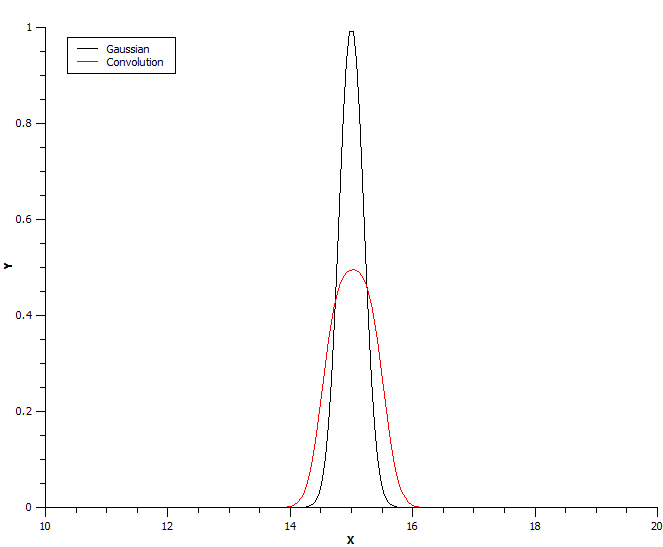Convolution is an extension of CompositeFunction which performs convolution of its members using Fast Fourier Transform.

Here  is the first member function and
is the first member function and  is the second
member. A Convolution must have exactly two member functions. The
members can be composite if necessary. Interval
is the second
member. A Convolution must have exactly two member functions. The
members can be composite if necessary. Interval ![[A,B]](../_images/math/8fedf99daa76b293f2e09845b6316f98e38036c7.png) is the
fitting interval. The function is evaluated by first transforming
is the
fitting interval. The function is evaluated by first transforming
 and
and  to the Fourier domain, multiplying the
transforms, then transforming back to the original domain. The GSL FFT
routines are used to do the actual transformations.
to the Fourier domain, multiplying the
transforms, then transforming back to the original domain. The GSL FFT
routines are used to do the actual transformations.
It should be noted that the two functions ( and
and  ) are
evaluated on different intervals.
) are
evaluated on different intervals.  is computed on
is computed on ![[A,B]](../_images/math/8fedf99daa76b293f2e09845b6316f98e38036c7.png) while
while  is computed on
is computed on ![[-\Delta/2, \Delta/2]](../_images/math/ce069e795f73d6695a0ce4284a77e07d030ab70f.png) , where
, where
 .
.
In the following example a Convolution is convolved with a box function:

Note that the box function is defined on interval [-5, 5]:

| Name | Type | Default | Description |
|---|---|---|---|
| FixResolution | |||
| NumDeriv |
Categories: FitFunctions | General